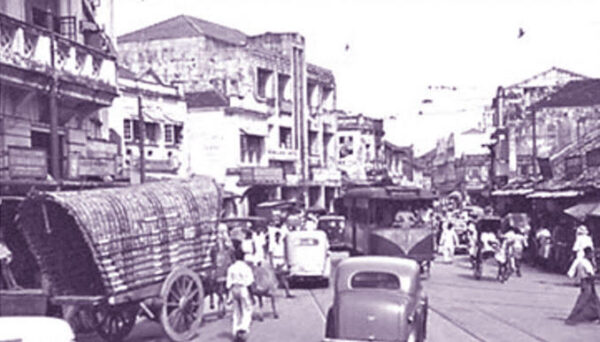Fond memories of old Colombo city-by HM NISSANKA WARAKAULLE

Source:Island
The Colombo city changed very much from what it used to be about half a century ago. The biggest change is the skyline with many high-rise buildings, almost covering the entire city with a large number of big trees vanishing.
Colombo has lost many playgrounds which were the lungs of the city. The Army cricket ground gave way to the Shangri-La and its football ground was taken for the construction of the Taj Samudra Hotel. The advent of Cinnamon Lakeside Hotel , meant that the Government Services Sports Club ground disappeared. The Fort Police Station and the Quarantine Department gave way to the construction of the Hilton Colombo. The Nelum Pokuna ousted the Nomads grounds.
Some of the popular cinemas that were in Colombo too have disappeared. Of these the Elphinstone and the Tower Hall have been converted into theatres, where mostly Sinhala plays are staged. The Capitol (in Armour Street), which screened famous serial films, the Kingsley (in Kotahena) and the Plaza (in Wellawatte), which screened Tamil films, just vanished from the scene. Three cinema halls were burnt down by ruffians during the July 1983 communal riots. They were the Sapphire in Wellawatte, the Gamini on Darley Road and Kalpana in Kirulapone. This was done as these cinemas belonged to Tamil businessmen. The Empire Theatre was demolished for the construction of a luxury apartment complex.
Colombo had a good system of tramways, which covered almost the entire area of the Fort and Pettah. Buses were not permitted to ply on the roads that were covered by the tramcars. Later, when Dr. NM Perera was the Mayor of Colombo, he got the tramcars replaced by single and double decker trolley buses, which used the same electric cable system that were used by the tramcars. The trolley buses were very comfortable to travel in.
Although there were individuals operating taxis, the two famous companies were Quickshaws and Hinni Appuhamy. The fleet of vehicles these companies owned were Morris Minor cars. The taxis had metres fitted outside on the right-hand side, which enabled the driver to manipulate the metre easily when the passenger/s got in and got out at the end of the journey. At one stage all taxis in Colombo were painted black and yellow.
The train service on the narrow gauge Kelani Valley line between the Fort and Opanayake was discontinued. Just as in the case of the tram cars, people used to get in and get out of these trains whilst they were moving. This was because both these moved so slowly.
Another popular mode of transport in Colombo at that time was the rickshaw, used locals as well as some foreigners who visited Sri Lanka at that time. This mode of transport was very widely used to take children to school, especially the girls, sometimes accompanied by a chaperon. The poor rickshaw puller sometimes had to run as fast as he could when beckoned by the passengers he was carrying.
Bullock carts were also in use, especially to transport goods, mostly from the outstations to the Pettah and vice versa. Some people made use of bullock carts to transport their household furniture and other goods when shifting residences, as it was cheaper. Another common sight then was the kerosene cart, which had a big barrel painted in red and filled with the kerosene, and a tap to give out the oil.
There were many roundabouts at junctions where there were crossroads, which helped the motorists to slow down and give way to the traffic from the right; and at that time almost all motorists observed this conventional rule, which is not adhered to by drivers at present. This has been overcome by installing colour lights at most of the existing roundabouts in Colombo.
All cinema halls used to have a late show at 9.00 or 9.30 pm, as there were buses available after the show for people to get back home. But now the cinemas have done away with the late show, as there are no cinemagoers patronsing the late evening shows due to non-availability of public transport.
The tiffin carriers were another lot that we miss in Colombo today. They used to collect the nicely packed and labelled lunches from the homes in and around Colombo, to be delivered to the offices where the lunches had to be handed over. The lunch carriers had bicycles, which had baskets in front to carry the lunches. After collecting the lunches, they used to come to Queens Road, off Thurstan Road, and then sort the lunches out according to the delivery offices. Each person selected the lunches that had to be delivered, in one direction. Off they go to deliver. Once officers have finished their lunch, the carriers would come to collect the empties, and back to Queens Road. Now the empties are sorted out according to the location of the homes and delivered. This was a boon to those working in offices in the Fort and Pettah, as they did not have to buy their lunch from hotels, and they also had good healthy home cooked lunch.







